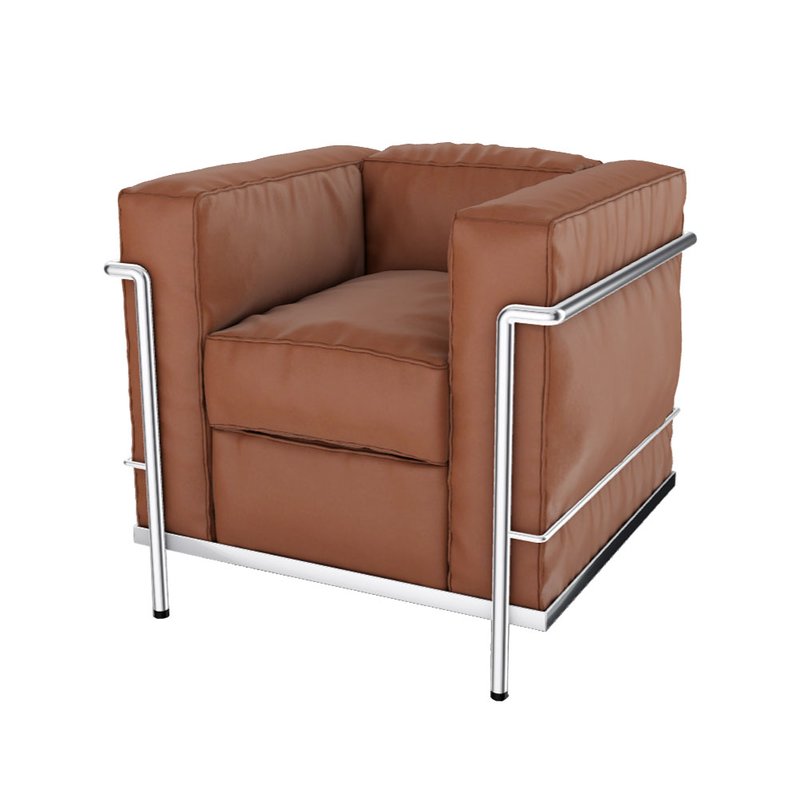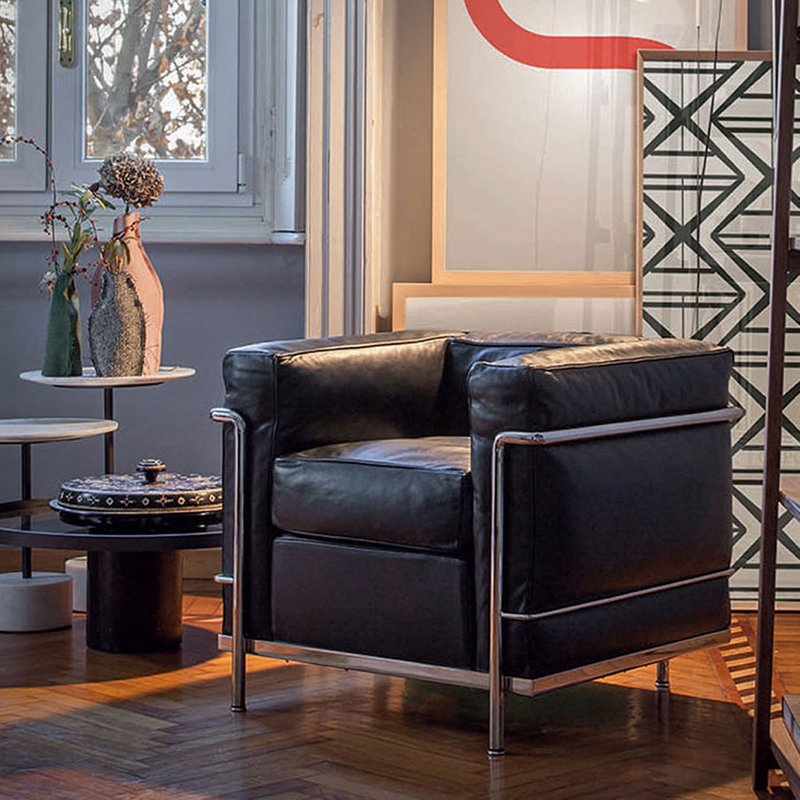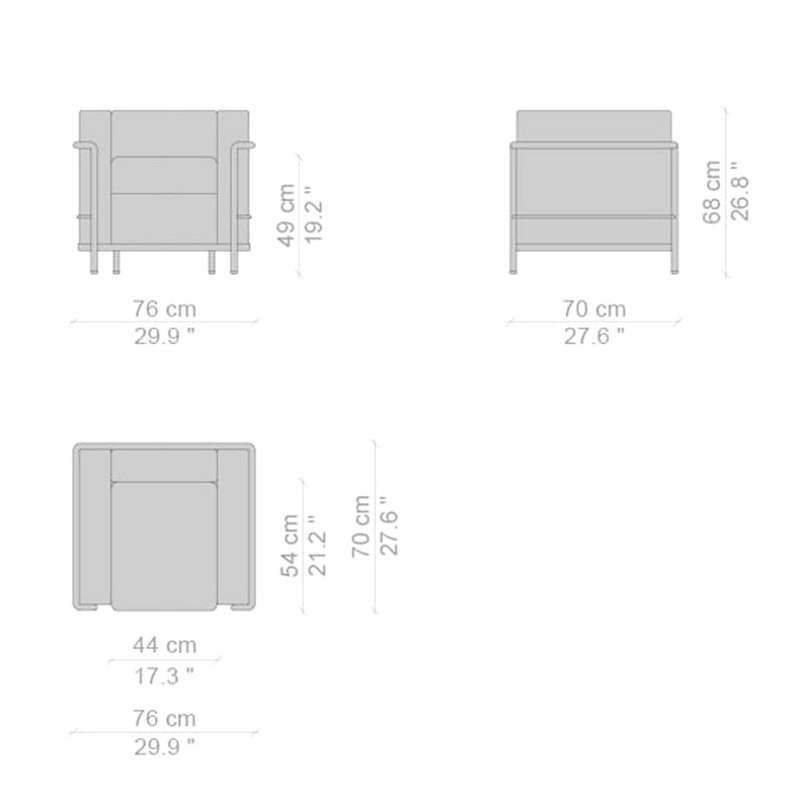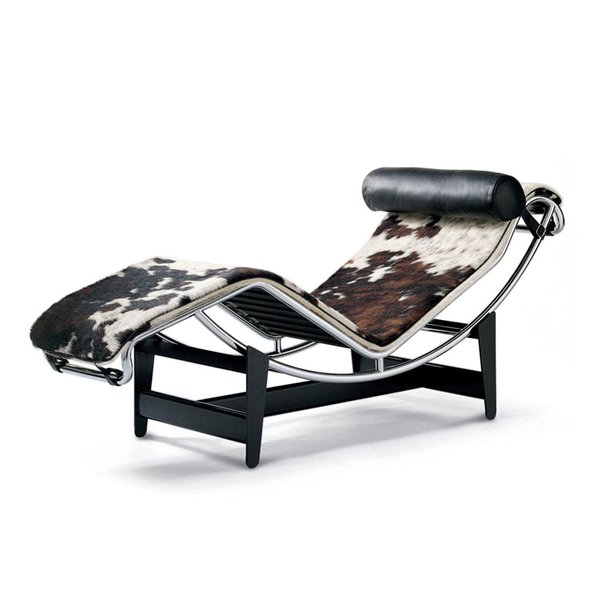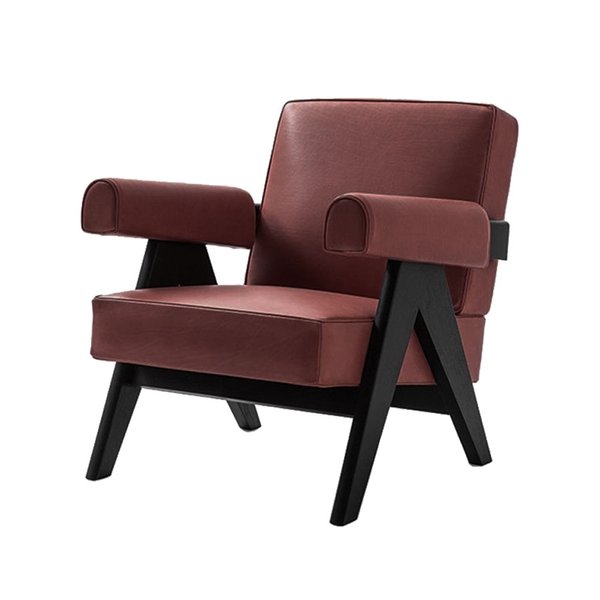2 Fauteuil Grand Confort, petit modèle
Armchair
| Upholstery | : Leather |
| : Pelle Lcx/Tobacco 13Y417 | |
| Structure | : Polished Chrome |
| Cushions | : Polyester |
| Dimensions | : 760 x 700 x 680 mm |
*The product images shown are for illustration purposes only and may not be an exact representation of the product
Timeless, unique, and profoundly authentic, the LC2 armchair has played a role in the history of furniture design, becoming a worldwide icon. Created to enhance conversation, this armchair was exhibited at the Salon d’Automne in Paris in 1929, as an archetype of the modern conception of furniture, dubbed “domestic equipment” by its creators. The separation of metal frame from upholstery expresses the Rationalist approach, this same separation responds to the logic of industrial manufacture, while also evoking the architectural relationship between the load-bearing structure and the walls. The balance between form and function derives form an in-depth study of human posture human body and through the use of the Modulor, a system based on the typical measurements of the male body and on a mathematical language informed by the proportions of universal harmony.
| Upholstery | : Leather |
| : Pelle Lcx/Tobacco 13Y417 | |
| Structure | : Polished Chrome |
| Cushions | : Polyester |
| Dimensions | : 760 x 700 x 680 mm |
*The product images shown are for illustration purposes only and may not be an exact representation of the product
Timeless, unique, and profoundly authentic, the LC2 armchair has played a role in the history of furniture design, becoming a worldwide icon. Created to enhance conversation, this armchair was exhibited at the Salon d’Automne in Paris in 1929, as an archetype of the modern conception of furniture, dubbed “domestic equipment” by its creators. The separation of metal frame from upholstery expresses the Rationalist approach, this same separation responds to the logic of industrial manufacture, while also evoking the architectural relationship between the load-bearing structure and the walls. The balance between form and function derives form an in-depth study of human posture human body and through the use of the Modulor, a system based on the typical measurements of the male body and on a mathematical language informed by the proportions of universal harmony.

